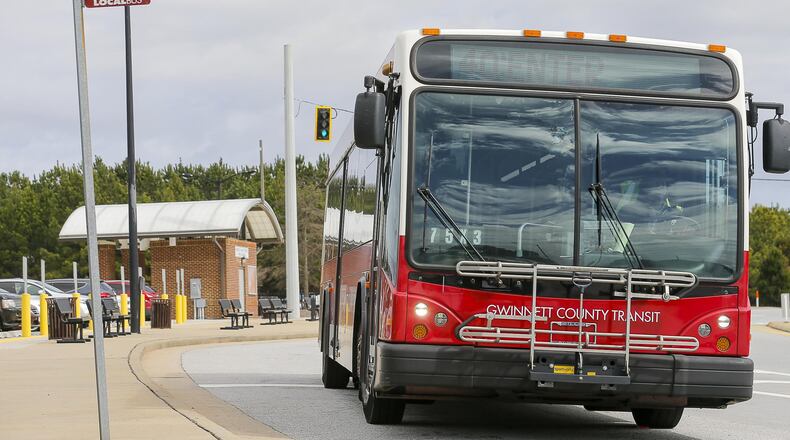Fool’s gold, albatross, trojan horse, boondoggle, spider’s web; all these clichés and many more are apt descriptions of what is facing Gwinnett County voters on March 19th with MARTA’s attempt to expand its operations into Georgia’s second-most populous county. The language of the ballot initiative is deceptively vague, where it is asking voters to approve a contractual agreement which will allow MARTA to provide transit services to the county. Sounds innocuous enough. But the devil is in the details.
What the ballot language does not tell you is that if the measure passes, Gwinnett’s six percent sales tax will be replaced with a permanent seven percent for giving MARTA the privilege of taking over Gwinnett’s mass transit services. But why should Gwinnett increase its sales tax by 17 percent when Gwinnett already provides its own rather robust transit service?
According to the measure’s supporters, this additional revenue will give Gwinnett an “opportunity” to expand mass transit, in the form of heavy- and light-rail deep into the county, enabling commuters to leave their cars at home and enjoy carefree, cost-effective and, most importantly, congestion-free trips to and from work. Well if you believe that, then there is a bridge in Brooklyn I am dying to unload.
First, commuter rail does not get people out of their cars and does not reduce traffic congestion. What it does do is waste billions of dollars, enrich its builders and divert scarce resources away from solutions that could actually improve urban mobility; i.e. it makes traffic worse!
In city after city, and Atlanta is no exception, the costs of building, operating and maintaining urban rail systems are so astronomically high that it crowds out funding for what is far and away the most cost-effective mass transit solution out there — buses. When construction costs for MARTA were nearly 60 percent more than expected, MARTA responded by cutting bus service, resulting in per capita transit ridership falling by two thirds from 1985 to 2015. This is an ugly harbinger of what Gwinnett will experience if it places its fate in the hands of MARTA.
The reason buses are so much more efficient is that, unlike rail, the infrastructure for buses already exists, and its upfront capital costs, mainly just the cost of buses, is a tiny fraction of urban rail systems. Not only does the costs for rail cars dwarf that of buses, buses also don’t have to contend with the cost of rails, roadbeds, signals, power supplies and rolling stock. And buses are flexible. They can change routes and schedules to meet ever-changing needs.
Expansion of MARTA in Gwinnett will also divert resources away from the most critical need in a growing metropolitan area: road expansion and maintenance. That is because the overwhelming majority of us commute to work by car, and even after over 40 years of operation, MARTA’s share of commuting by rail, as of 2015, was only 3.6 percent and falling. When a population grows, when an area expands, traffic will increase. And the most sensible way to address this growth is to expand the infrastructure upon which well over 90 percent of commuters in Atlanta depend.
MARTA expansionists in Gwinnett will argue that we need to discourage car use and encourage rail. In this context, that makes about as much sense as saying to a school district with a growing student population, that in order to avoid the necessity of building new schools, we need to discourage parents from having more children.
In this regard, there are many market-based and creative solutions to address the needs of auto mobility such as roundabouts, lane-splitting for motorcycles (as is safely done in California and around the World), synchronized traffic signals, and more managed lanes and HOT lanes, just to name a few. What Gwinnett does not need is a calcified bureaucracy that will foist 19th and 20th century technologies to address the transportation needs of the 21st. Vote NO on March 19th. You have better things to do with your money.
About the Author
Keep Reading
The Latest
Featured


